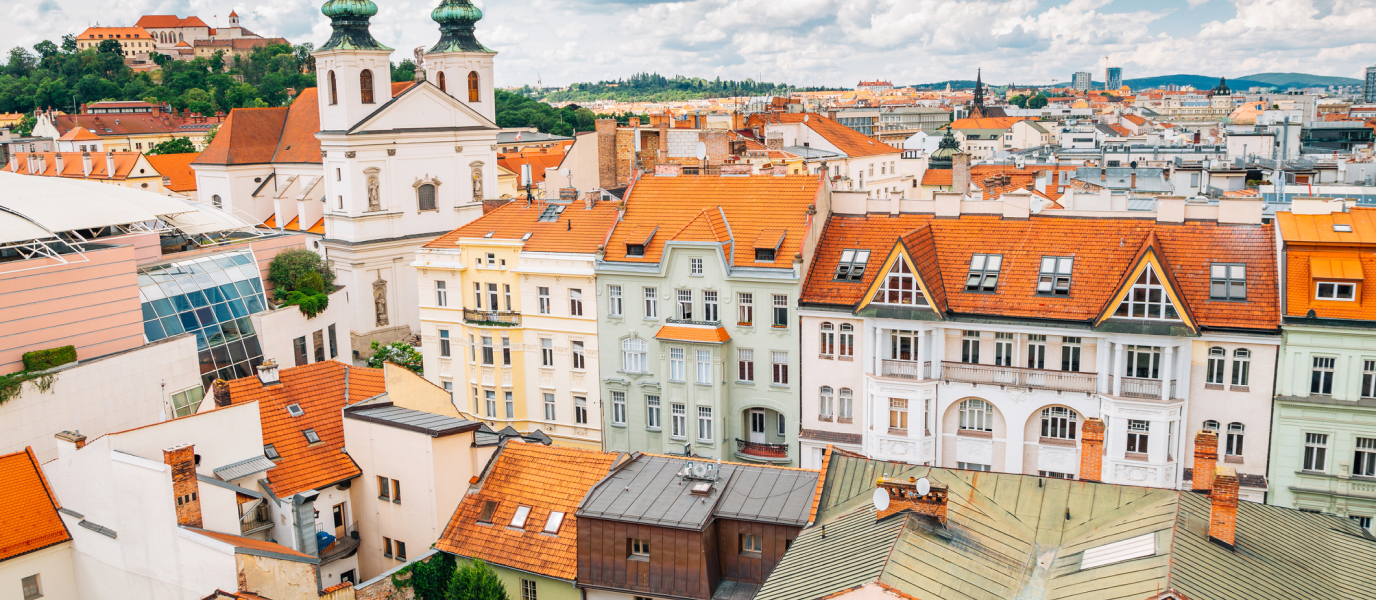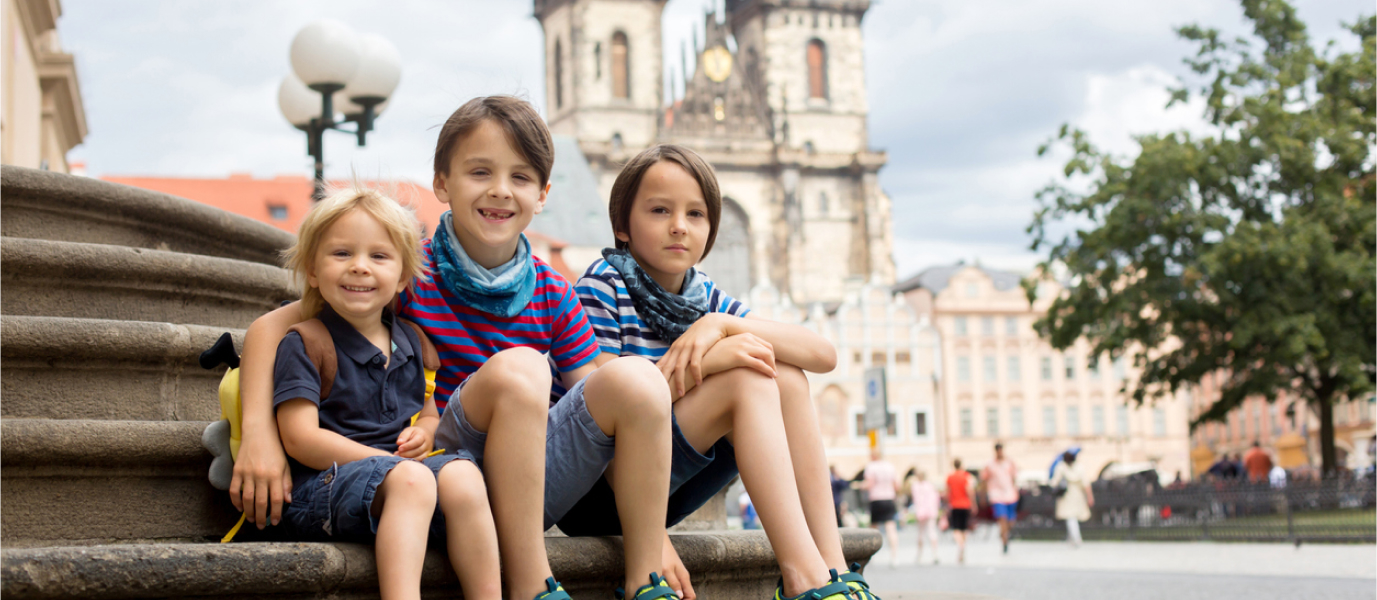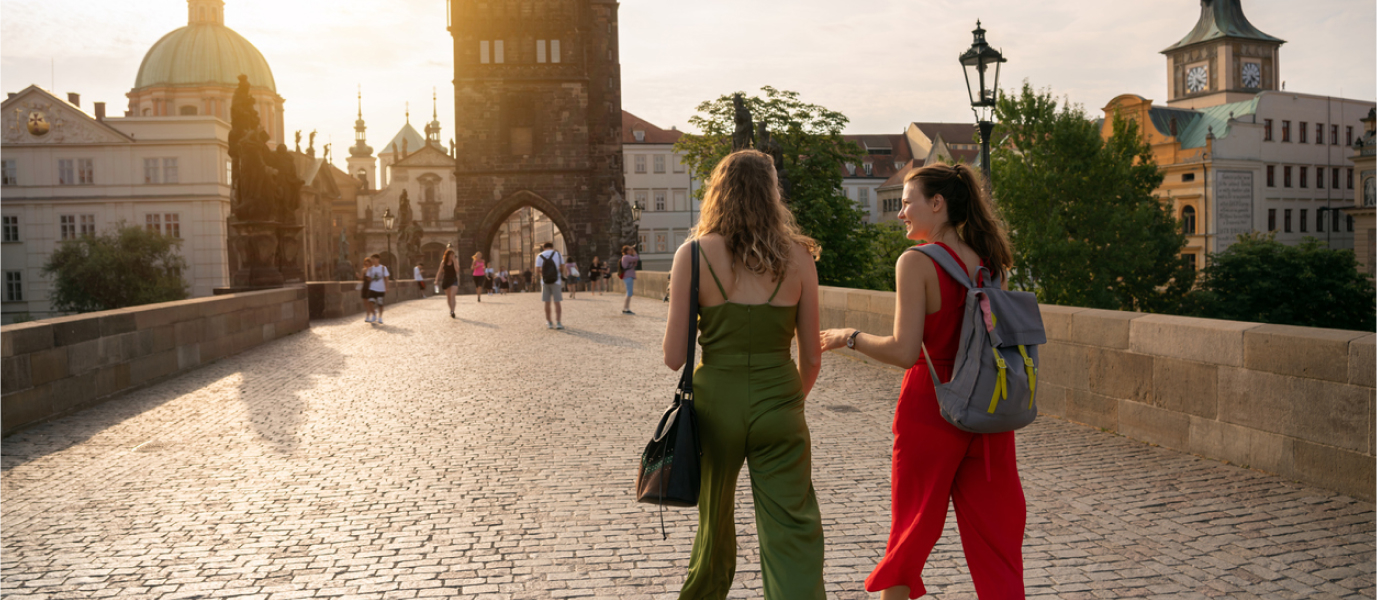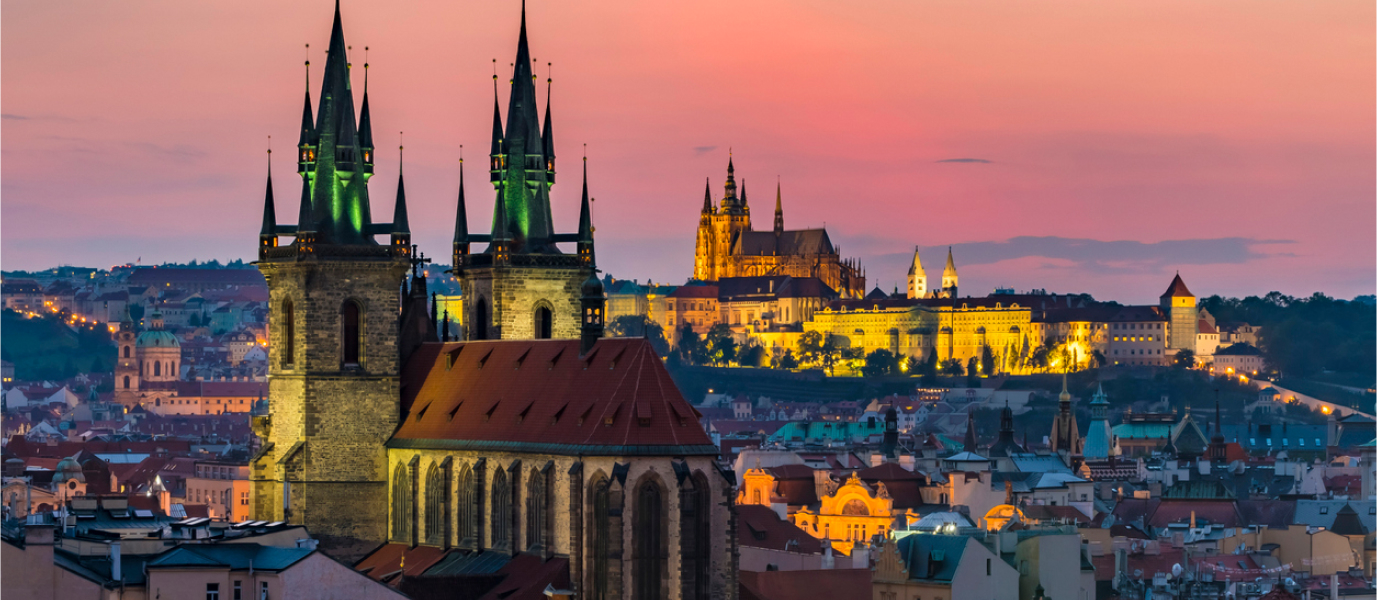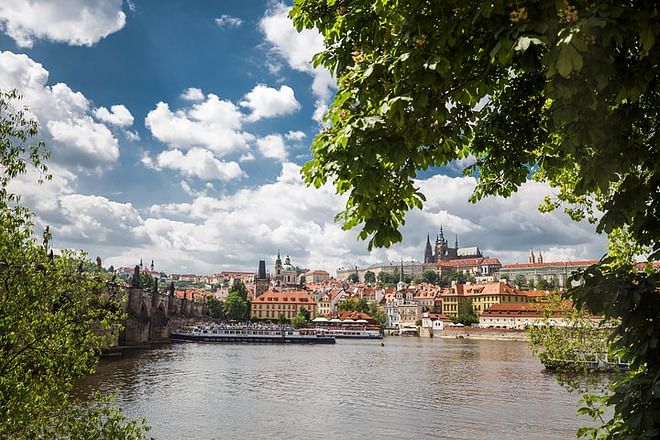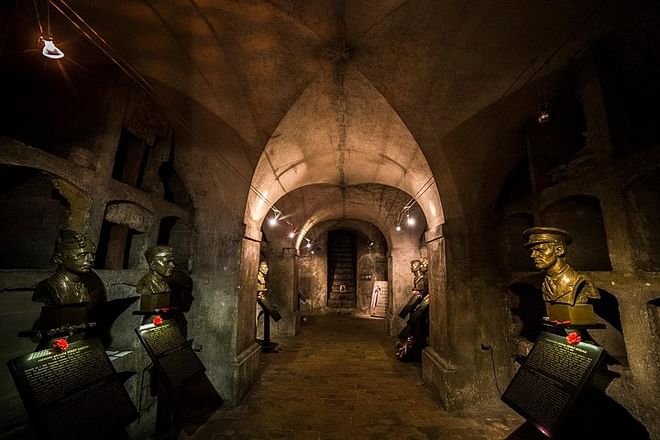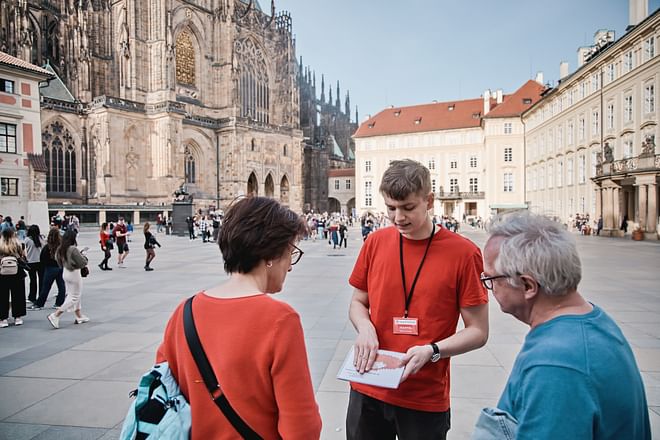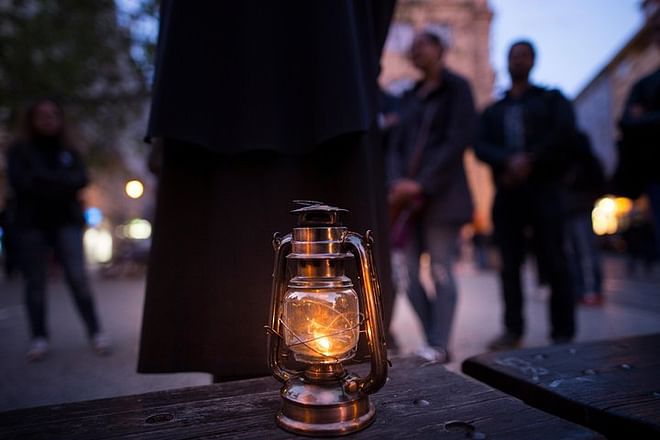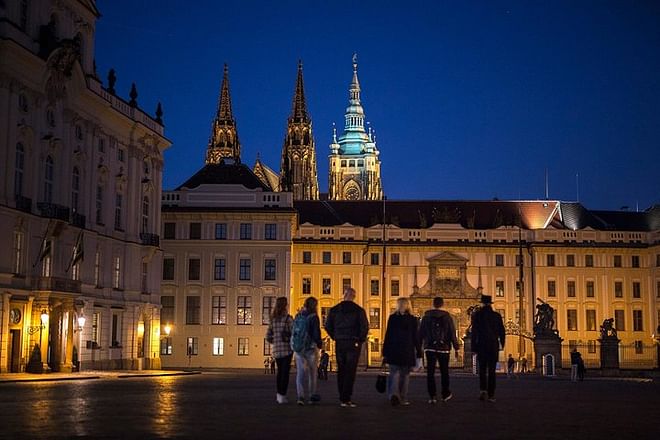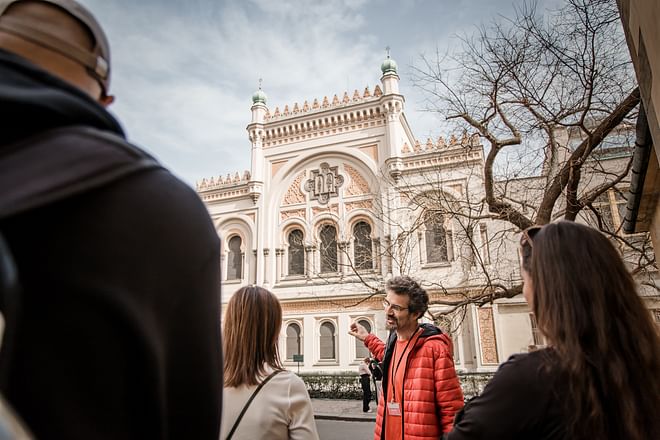Brno, the Czech Republic’s second-largest city in terms of both size and population, has for many years remained in the shadow of the country’s beautiful capital, Prague. Recognised as the capital of South Moravia since the break-up of Czechoslovakia in 1993, Brno and its unique character have gathered up nicknames aplenty. Some refer to the city as the “Czech Vienna”, as much in acknowledgement of its proximity to the Austrian capital as of any resemblance in the monumental buildings of the two cities. Others know it as the “Manchester of Central Europe”, as it still has a large number of factories dating back to the time of the Industrial Revolution.
As an unexpected melting-pot of history and cultures, the Brno of today impresses visitors with its museums and art galleries, its theatres and travelling markets, its peaceful days and its lively nights… Contributing to this is the vibrant university life—it has 33 faculties and almost 89,000 students annually. In addition, its transport network, with 12 tram lines and 13 trolleybus lines, makes the city compact and accessible. Although the main tourist attractions are Villa Tugendhat (a pearl of inter-war Functionalist architecture) and the Brno Circuit (setting for the World Motorcycle Championship), we will tell you about a few more.
What to see in Brno. Visiting the old quarter
Any visit to Brno should start at Liberty Square, the nerve centre of the city. Here, in addition to terraces of bars and restaurants, you will find fairs of different kinds being held throughout the year. Also in this square, you can see a curious astronomical clock carved in black granite in the shape of a bullet. Every day at 11:00 AM the clock releases a small glass marble which can be picked up as a memento by passers-by, in memory of the siege to which the city was subjected by the Swedes in 1645.
Walking southwards, we soon arrive at the Old Town Hall (Stará radnice, in Czech), the oldest civil building in Brno and dating from the thirteenth century. Here we can enter the tourist office to find hanging inside nothing more and nothing less than a two-metre-long dragon. It is, in fact, a stuffed crocodile which, so the legend tells, a nobleman gifted to the city a long time ago.
If we ask at the tourist office, they will be sure to send us to see the Vegetable Market Square (Zelný trh, in Czech), an attractive, square esplanade almost permanently occupied by stalls selling fruit, vegetables, flowers and herbs. In the centre of the square is the Baroque Parnas fountain, replete with allegorical allusions to various empires of the Ancient World. And in the same square, we can see the Reduta Theatre, one of three buildings that make up the National Theatre of Brno, and where Mozart is said to have performed at the age of 11.
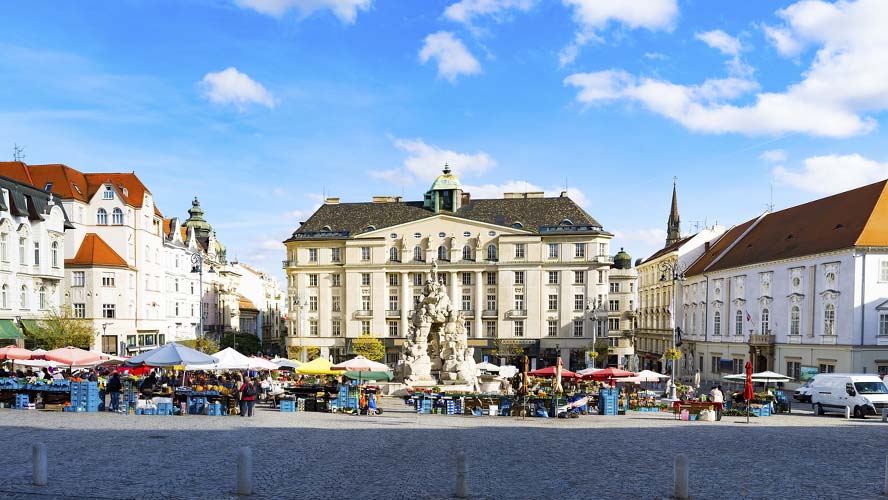
Finally, on our tour of Brno’s old quarter, we must not forget to visit Mendel Square (Mendlovo náměstí, in Czech). Here, stands St Thomas’s Abbey, an important site in the History of Science, because this is where, from 1843, the renowned monk and geneticist, Gregor Mendel, developed his famous laws based on experiments performed on peas. Very close to this square is the Brno Great Exhibition Centre, and the Starobrno beer factory, complete with terrace bar.
Brno’s cathedrals and castles
As with almost every point of interest in Brno, the Cathedral of St Peter and St Paul is a mere stone’s throw away from where we happen to be. Built on Petrov Hill, this thirteenth-century edifice displays a harmonious blend of architectural styles, the result of successive renovations. The late Gothic (its original style) combines with the Baroque style it acquired following the fire started during the 1645 siege. However, the tall towers that are the cathedral’s distinguishing feature date from the early twentieth century.
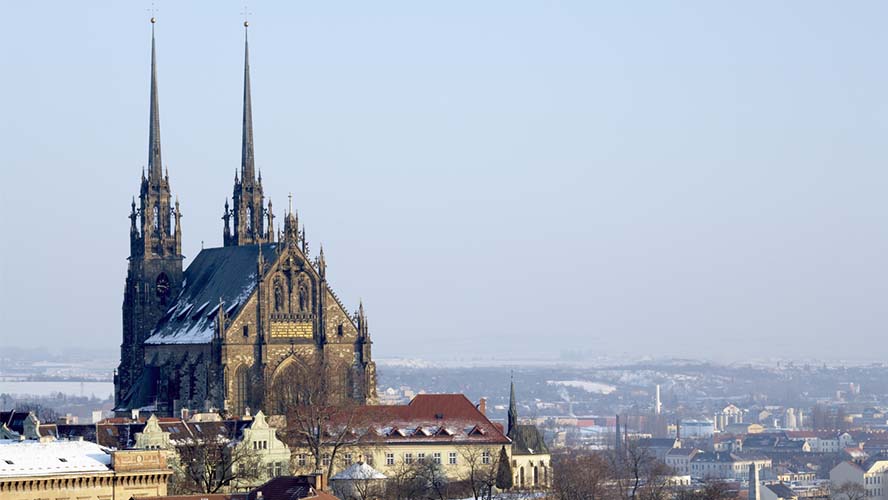
Facing Petrov Hill stands another of Brno’s most renowned buildings, Špilberk Castle. This fortress has dominated the city for centuries, ever vigilant, while its interior has built up a most impressive collection of stories and legends. Used as a state prison during the time of the Austro-Hungarian Empire, it later became a torture centre in the hands of Nazi Germany’s Gestapo. Fortunately, today this museum is a municipal museum, which enables visitors to delve into the fortress’s sinister history.
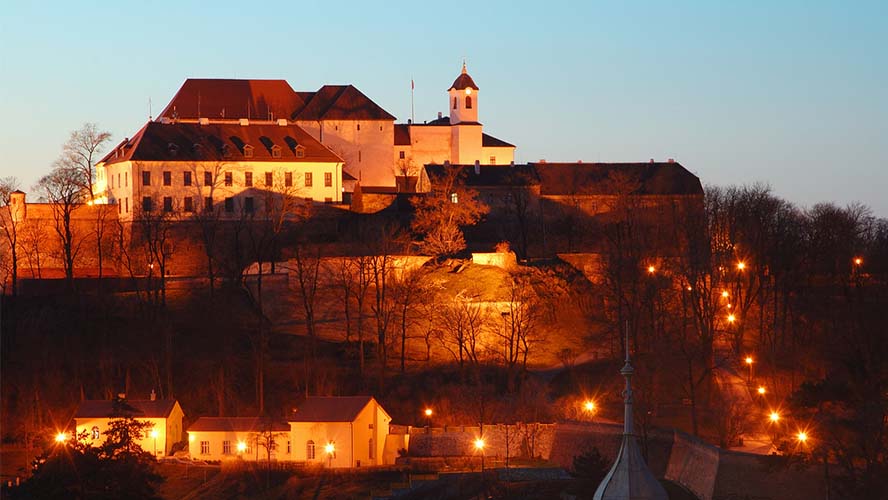
Villa Tugendhat, a journey back to the origins of modern architecture
Along with its historic civil buildings, castles and cathedrals, the city of Brno has amassed a respectable display of the Functionalist architectural style that a few Central European countries adopted in the early twentieth century under the influence of the Chicago School. In this respect, Villa Tugendhat (declared a World Heritage Site by UNESCO in 2002) is, without the shadow of a doubt, the Czech Republic’s most illustrious edifice. Built in 1929 by the famous German architect Mies van der Rohe in collaboration with the outstanding interior designer Lilly Reich, this mansion modernised architecture through the radical simplification of forms in pursuit of functionality.
The building’s history alone provides sufficient reason to visit it. Following the Nazi invasion, the house became the head office of a construction company. With the arrival of the Soviets, a re-education centre for young people was housed within it. It was not until 1963 that Villa Tugendhat was declared a cultural monument by the USSR.
Nowadays Villa Tugendhat, which is located very close to Lužánky Park, houses a museum. Furthermore, as it is built on the side of a hill, it serves as a viewing point from which can be seen some of Brno’s most important buildings.
The Brno Circuit and other excursions near Brno
If you have enough days available, you may be interested in visiting other places near Brno. There is a wide variety of options for excursions available from the city. Here are a few of them:
- The Masaryk Circuit—popularly known as the Brno Circuit—is just 24 kilometres to the west of Moravia’s capital city. Built between 1985 and 1987, this aerodrome has since hosted several international car- and motorcycle-racing championships, with the most famous being the MotoGP.
- Slavkov Palace (also known as Austerlitz Castle), which is only 25 minutes’ drive to the east of Brno. This stately edifice, dating from the twelfth century, is famous because the Battle of the Three Emperors took place here in 1805. Originally built as a castle for the famous Teutonic Knights, the building became (from the seventeenth century onwards) a lavish palace surrounded by gardens in the French style. Nowadays, guided tours are available, both of its interior and to the nearby Monument to Peace, raised in commemoration of the signing of the Franco-Austrian armistice.
- Finally, the Moravian Karst offers the opportunity to visit one of the Czech Republic’s most famous protected nature reserves. Located near the town of Blansko, just a 35-minute car drive from Brno, this collection of intriguing geological formations enables visitors to explore hundreds of caves and canyons.





























































